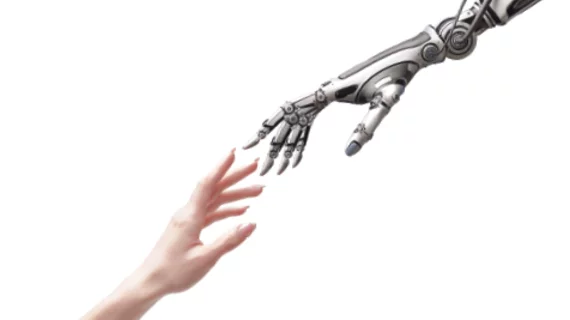How do radiologists really feel about adopting AI? New data offer insight
Up to 60% of radiologists have intentions of adopting artificial intelligence tools into clinical practice in the near future.
That’s according to the results of a new questionnaire that dug into radiologists’ preferences pertaining to the use of AI as a support tool for cancer detection and risk prediction during mammography screening. The results were published recently in the Journal of the American College of Radiology.
Corresponding author on the paper Kathryn P. Lowry, of the Department of Radiology at the University of Washington, Seattle Cancer Care Alliance, and colleagues noted that although the clinical use of artificial intelligence is becoming more widely implemented, the opinions of those who will inevitably be affected the most by its use—the radiologists—still remain relatively elusive.
“Several AI-based tools for mammography interpretation have been recently approved for clinical use by the U.S. Food and Drug Administration (FDA) and are now commercially available,” the authors wrote. “Despite the pace of production of AI-based mammography decision support tools, it is not yet clear which technologies will be embraced by practicing radiologists.”
After conducting quantitative interviews with radiologists to better understand their intentions on utilizing AI tools, the researchers identified five primary attributes for AI-based breast cancer detection and four for breast cancer risk prediction. Based on those, they developed a discreet choice experiment (DCE) and invited 150 U.S.-based radiologists to participate.
They received responses from 66 radiologists representing six practice settings across eight states.
In the realm of AI for cancer detection, the respondents indicated that they preferred tools that achieve balanced sensitivity and specificity (94% sensitivity with <25% of examinations marked). For the same application, they also showed favor for AI mark-ups that appeared at the end of hanging protocols after interpretations are completed.
When it came to risk prediction, models that included mammography images and clinical data were preferred by the rads.
In terms of the future, 46-60% of the respondents indicated that they intend to adopt AI tools into clinical practice, while 26-33% were enthusiastic about its use but hesitated to embrace the technology completely if it did not align with their preferences. A small minority shared that they did not intend to use AI in any application, regardless of its features.
“Our findings may be useful in aiding decisions about prioritization of resources to develop new features for AI in screening mammography, implementation in real world settings and regulation of AI tools,” the authors suggested, before adding that future similar work should focus on the preferences of other stakeholders, such as payers and patients.
The study can be viewed here.

